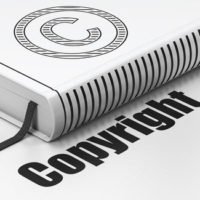The DMCA Safe Harbor Regime: Explained

Signed into law by President Bill Clinton in October of 1998, the Digital Millennium Copyright Act (DMCA) seeks to provide a balanced environment, both protecting the interests of copyright holders and accounting for the concerns of website owners and operators that accept user-created submissions.
The ‘Safe Harbor’ provisions contained within this law provide immunity for ‘online service providers’ (OSPs) against copyright infringement claims. Here, our experienced Miami copyright litigation attorneys highlight four of the most important things that copyright holders and website owners should know about the DMCA.
DMCA Safe Harbor Provision: Frequently Asked Questions (FAQs)
What is a DMCA Safe Harbor?
Fundamentally, DMCA safe harbor provisions are designed to protect OSPs from liability in copyright claims, where the underlying infraction came out of the conduct of an unrelated end-user. There are actually four different DMCA safe harbors, those being:
- Storage safe harbor: Protecting OSPs that allowed users to upload content for storage.
- Transmission safe harbor: Protecting OSPs that allowed users to transmit content and information.
- Caching safe harbor: Protecting OSPs that cache information.
- Search engine safe harbor: Protecting OSPs that provide links to content and information.
What are the Limits of the DMCA Safe Harbor Protections?
While the DMCA safe harbor protection is undoubtedly extremely strong, it is also narrowly tailored to address a very specific issue. All website owners and operators should know that the following things are not protected under any DMCA safe harbor regime:
- Foreign copyright claims;
- Alleged trademark infringement violations; and
- S. copyright law violations committed by the online service provider (OSP).
How Do Copyright Holders Bring a DMCA Complaint?
To get an OSP to take down infringing material, a copyright holder must file an official DMCA take down notice. This notice should contain the following five things:
- Identification of the infringing material;
- The approximate location of the infringing material;
- Detailed contact information for the copyright holder or their representative;.
- A statement that the notice is being filed in good faith; and
- A statement affirming that the party sending the notice is either the actual copyright holder or a legitimate representative of the copyright holder.
What Should an OSP Do After Receiving a Copyright Claim?
To maintain its protections under the DMCA, an OSP should take down any potentially infringing content immediately after it has received an official notice of infringement from the copyright holder. Prompt take down should always occur. The end user then has the ability to file a counter notice to get their content restored. If a notice and counter notice have both been filed, then the copyright issue will be litigated between the copyright holder and the end user. The OSP can maintain its liability shield.
Contact Our Miami Business Litigation Attorneys Today
At Pike & Lustig, LLP, our Florida copyright law lawyers have extensive experience handling DMCA claims. To get immediate legal assistance, please contact our law firm today to get a free review of your case. We have offices in West Palm Beach, Wellington and Miami, and we represent copyright law clients throughout southeastern Florida, including in Kendall, Coral Gables, Homestead, and Princeton.
Resource:
copyright.gov/legislation/dmca.pdf
